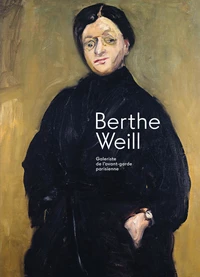Long renowned as an artistic mecca, Paris renewed its allure as a cultural capital following the end of World War II by attracting a new wave of expatriates from the United States. Americans in Paris explores this vibrant community of artists, writers, and musicians who lived in the City of Light for a year or more from 1946 to 1962. Many took advantage of a newly enacted GI Bill, which covered tuition and living expenses ; others, including many women, financed their own sojourns.
Americans in Paris : Artists Working in Postwar France, 1946-1962 is the first major publication to focus on this intensely fertile period. Featuring new scholarship, four illuminating essays, an invaluable chronology, and never-before-published interviews with twenty-five central figures, this groundbreaking volume amply illustrates paintings, sculptures, drawings, prints, photographs, and films these expats produced.
It also provides a counterpoint to the established characterization of New York as the midcentury's ascendant creative center, proposing Paris-and direct encounters with French collections, artists, critics, and gallerists-as a significant factor in the development of postwar American art.
Long renowned as an artistic mecca, Paris renewed its allure as a cultural capital following the end of World War II by attracting a new wave of expatriates from the United States. Americans in Paris explores this vibrant community of artists, writers, and musicians who lived in the City of Light for a year or more from 1946 to 1962. Many took advantage of a newly enacted GI Bill, which covered tuition and living expenses ; others, including many women, financed their own sojourns.
Americans in Paris : Artists Working in Postwar France, 1946-1962 is the first major publication to focus on this intensely fertile period. Featuring new scholarship, four illuminating essays, an invaluable chronology, and never-before-published interviews with twenty-five central figures, this groundbreaking volume amply illustrates paintings, sculptures, drawings, prints, photographs, and films these expats produced.
It also provides a counterpoint to the established characterization of New York as the midcentury's ascendant creative center, proposing Paris-and direct encounters with French collections, artists, critics, and gallerists-as a significant factor in the development of postwar American art.
